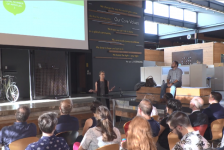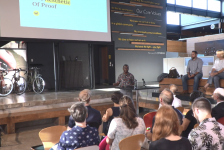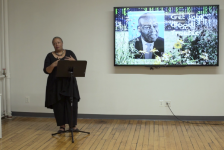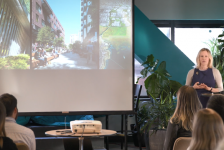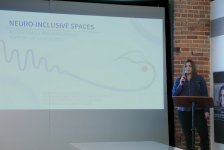Despite their ability to treat stormwater, cleanse air, and improve mental health, plants are too often an afterthought in urban design projects. What is often considered decoration or “parsley around the roast,” as famed landscape architect Thomas Church describes it, may actually have the potential to address the challenges of urbanization. That’s what Thomas Rainer asserted at Land8x8 Lightning Talks, announcing “I think it’s time to re-evaluate how the profession of landscape architecture approaches planting design.”
A leading voice in ecological landscape design, Rainer is among the cohort of practitioners who are turning away from conventional horticultural practices, which encourage arranging plants as individual art pieces, and drawing inspiration from the way plants grow in nature. He states that “when you go into the wild and see all the different types of conditions and the vast plant communities that are probably even better at adapting – more biodiverse and more pollinator friendly, and they hold stormwater even better – you realize we’re missing the mark by not innovating with planting design.” By researching the way plants grow in nature, Rainer has found inspiration for the design of urban landscapes.
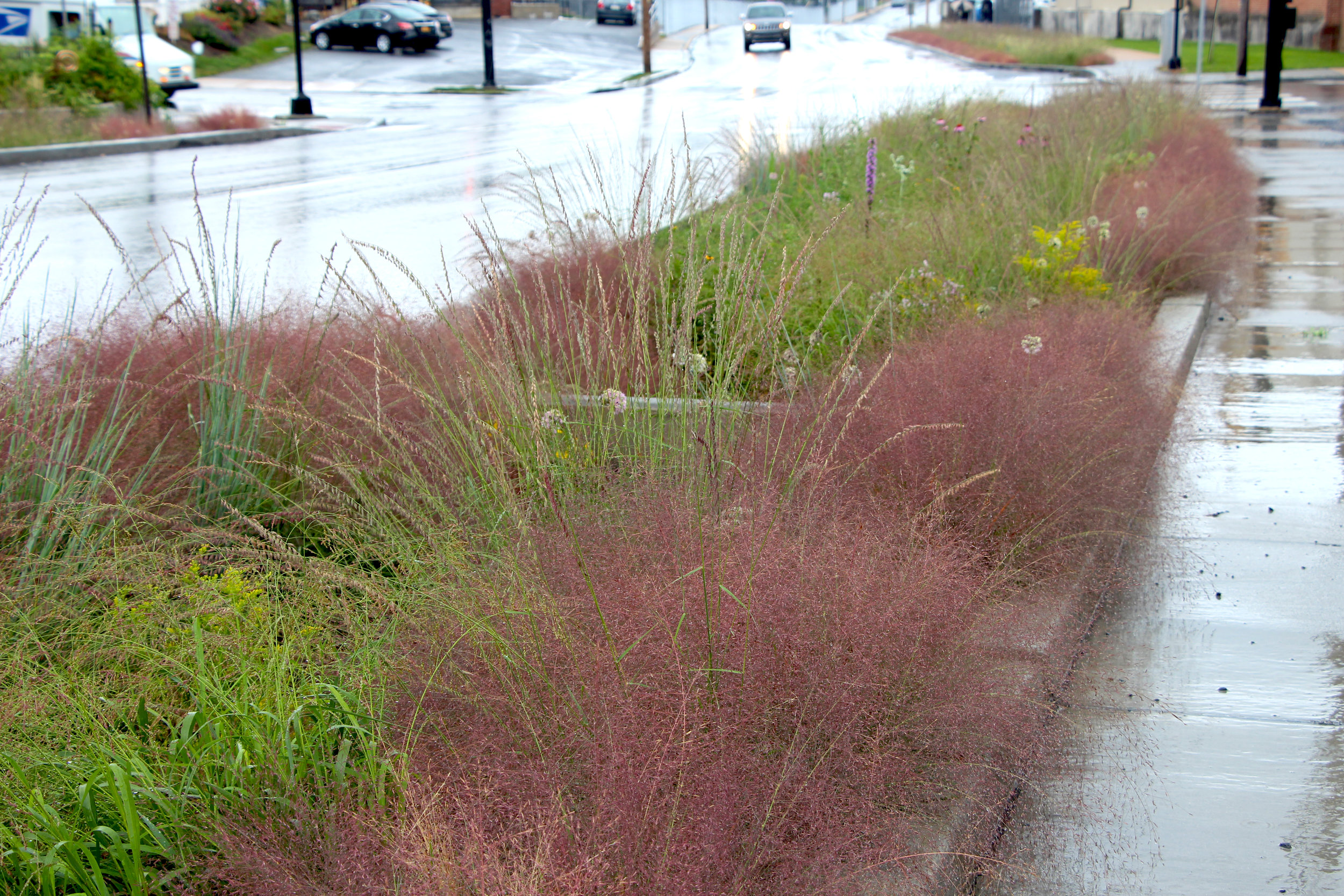
Naturalistic plantings designed by Claudia West fill this bioretention facility in Lancaster, PA for seasonal intrigue. (Photo: Phyto Studio)
Thomas Rainer and his colleague, Claudia West, made a name for themselves in the naturalistic landscape movement with a book they co-authored in 2015, “Planting in a Post-Wild World: Designing Plant Communities for Resilient Landscapes”. In 2017, they, along with Melissa Rainer, started Phyto Studio, a niche landscape architecture firm dedication to the design of plant communities. In nature, plants are grown in communities, Rainer explains, which intermingle and thrive off of each other. By mimicking this type of communal relationship we see the in wild, we are able to create landscapes that are captivating year-round, while remaining easy to maintain. While this design approach isn’t new – Dutch garden designer, Piet Oudolf, is an early pioneer of the naturalistic movement – these ideas have only recently been brought to the urban environment. For example, the High Line in New York City, and the Laurie Garden in Chicago implements this type of planting aesthetic.
“When you go into the wild and see all the different types of conditions and the vast plant communities that are probably even better at adapting – more biodiverse and more pollinator friendly, and they hold stormwater even better – you realize we’re missing the mark by not innovating with planting design.” – Thomas Rainer
Rainer sees plants as dynamic, engineered systems and has been exploring the qualities of plants to create landscapes that are functional, beautiful, and diverse. To better understand how we can take these wild plant communities and design plantings that thrive in cities, Rainer shares his approach to planting design, starting with choosing the right plants. By using plants that work in harsh urban conditions and are suitable to grow in these environments without relying on soil enhancements and irrigation, the plants will be easy to maintain and guaranteed to thrive. Next, Rainer explains, instead of creating separate, distinct clumps of different plants, use a layering approach that densely assembles groupings of plant species. By selecting plants that are compatible with each other, Rainer is able to achieve a planting design that is beautiful, diverse, and low maintenance.
For those who are concerned that this type of planting will look formless or weedy, Rainer notes that there is a right balance to strike in naturalistic planting design. The design should interpret nature, but not look too “wild.” By using strong architectural frames, and selecting the right, showy plant material, the design intention will be legible. “And I think once people embrace these as tools, we’ll have a new expressive age in terms of planting design,” Rainer asserts.
—
This video was filmed on September 28th, 2017 at ASLA’s Center for Landscape Architecture in Washington, DC as part of the Land8x8 Lighting Talks sponsored by Anova Furnishings.




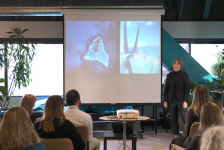
![Assuming Beauty [Video]](https://land8.com/wp-content/uploads/2019/05/walker-macy-lara-rose-land8x8-224x150.png)
![Beyond Our Landscapes: Interdisciplinary Research and Design for Health [Video]](https://land8.com/wp-content/uploads/2018/02/coco-alarcon-224x150.png)
